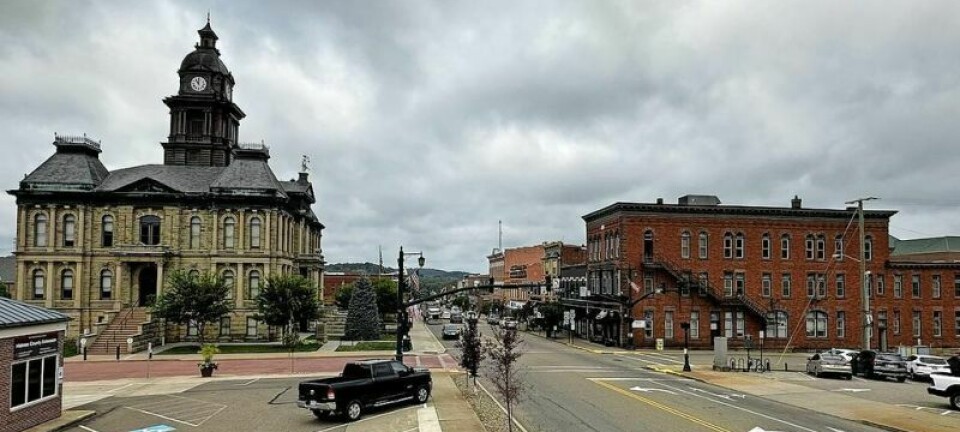Addressing climate crisis may be in our forests
In 2008 the U.S. EPA estimated the United States forests absorb 792 million metric tons of carbon dioxide annually. This is equivalent to 11 percent of all the greenhouse gas emissions from industrial sources. However, in a time when we should be planting trees and conserving existing mature forests, this country is logging at an unprecedented rate.
Satellite images of deforestation around the globe from 2002-12 show U.S. forests in the south are being cut at a rate four times that of South American rain forests.
More than 50 percent of southern forests are less than 40 years old, and only 1 percent of these forests are the original old-growth forests.
According to the World Resource Institute, “Less than 1 percent of large contiguous virgin forests with all species intact still exist in the lower 48 states.”
Additionally our forests are extremely fragmented and suffer from droughts and invasive species.
Unfortunately many of the trees being cut in our forests are not going to become high-end wood products but will supply Europe’s bio-energy boom. The U.S. is the largest manufacturer and exporter of wood pellets, which will be used to replace coal for electricity production in Europe.
Many of the wood products that we use end up in landfills. In 2013 one third of all municipal waste was some type of wood product, and of this amount, 27 percent were paper products. Sadly the U.S. Forest Service does not place a high priority on recycling and reuse of wood and paper. This material, when placed into landfills, decomposes in an anaerobic environment to create the very potent greenhouse gas, methane.
Other countries have recognized the need to incorporate forest preservation into their climate-change planning. It is time the United States steps up to do the same. We need to recognize that forests are more than timber.
Over two thirds of our fresh water supply filters through forest ecosystems. Forests act as a natural flood control. Forests provide habitat for species and help preserve biodiversity. Millions of people flock to national and state parks and forests every year for recreation, hunting and inspiration.
Although 99 percent of our virgin forests are gone, we still have forested areas that could be used to sequester carbon dioxide emissions. Studies are showing that mature trees and their ecosystems can store and absorb more carbon than a young forest.
Several countries are using this principle to save mature trees and encourage planting of new trees. Using trees to counteract atmospheric carbon also provides an economic benefit. This is achieved via a new program called carbon offsetting.
According to the World Resource Institute, a forest carbon offset “is a metric ton of carbon dioxide emissions of which is avoided or newly sequestered and is purchased by greenhouse gas emitters as a cost-control mechanism to compensate for emissions occurring elsewhere.”
So basically what happens is a company will pay a forest landowner to not log his trees but keep them growing. The growing trees will theoretically be absorbing the carbon dioxide that the company has emitted. It is a win-win situation as the forest remains intact and is able to provide all the “services” like flood control, and the company is able to offset some of its carbon pollution.
This program is similar to cap and trade in that carbon credits are traded via a carbon market, but unlike cap and trade, forest owners, not companies, are given the credits.
The United States has just recently begun exploring this idea, and several new programs are underway. There are four programs that are currently working with southern forest owners in the U.S. They are The Gold Standard, Verified Carbon Standard, Climate Action Reserve and American Carbon Registry.
In 2014 the city of Astoria, Oregon was faced with a budget crisis. One of its options to raise revenues was to “aggressively timber” old-growth hemlock in the Bear Creek Watershed. However, the city decided to enter into an agreement partnering with a nonprofit organization, the Climate Trust.
The 3,423-acre watershed would be used to offset greenhouse gas emissions from fossil-fueled power plants in the state. The program will sequester carbon dioxide in growing trees for 40 years. The first year will give the city $358,750 in carbon credits. Following years will add 130,000 annually to the budget for the next nine years. By the end of the agreement time frame, the city will have gained $2 million in revenues after fees.
Hopefully these carbon credit programs will start to become viable options in Ohio as well as other states. Shawnee State Forest in Southern Ohio has seen a threefold increase in logging in the past decade. There has been a 400-percent increase in commercial logging in public forests in Indiana since 2002, and West Virginia is currently looking at a newly introduced law, SB 270, which would allow logging in all of their state parks.
A nonprofit organization, Indiana Forest Alliance, is trying to stop the logging of 299 acres of yellowwood back-country forests, which is home to many rare and endangered species. They too are investigating carbon credits.
Carbon credits may be a way for Ohio’s state forests, such as the Mohican Memorial Forest, to generate revenue and avoid timber harvests. ODNR’s new five-year plan will remove mature trees from Mohican Memorial Forest that could be carbon sinks.
Instead of cutting down more forests, we could be preserving and planting our way out of the climate crisis we now find ourselves in. We need to be innovative and smart. Because once a tree is cut, it will take decades to regrow the potential carbon sink it once was.
















































